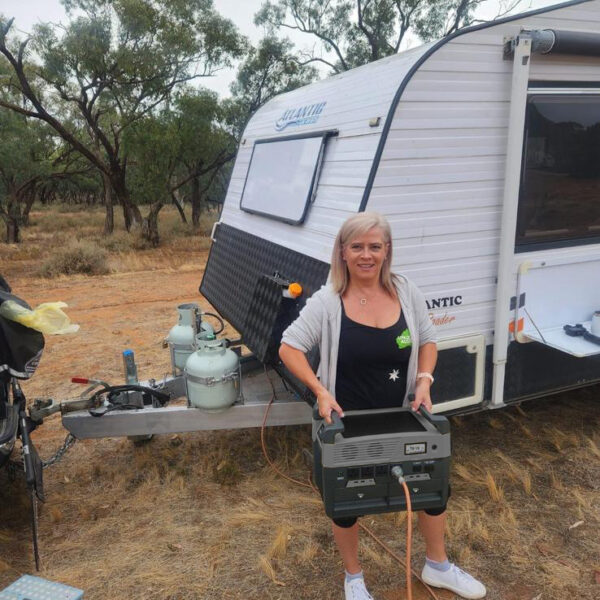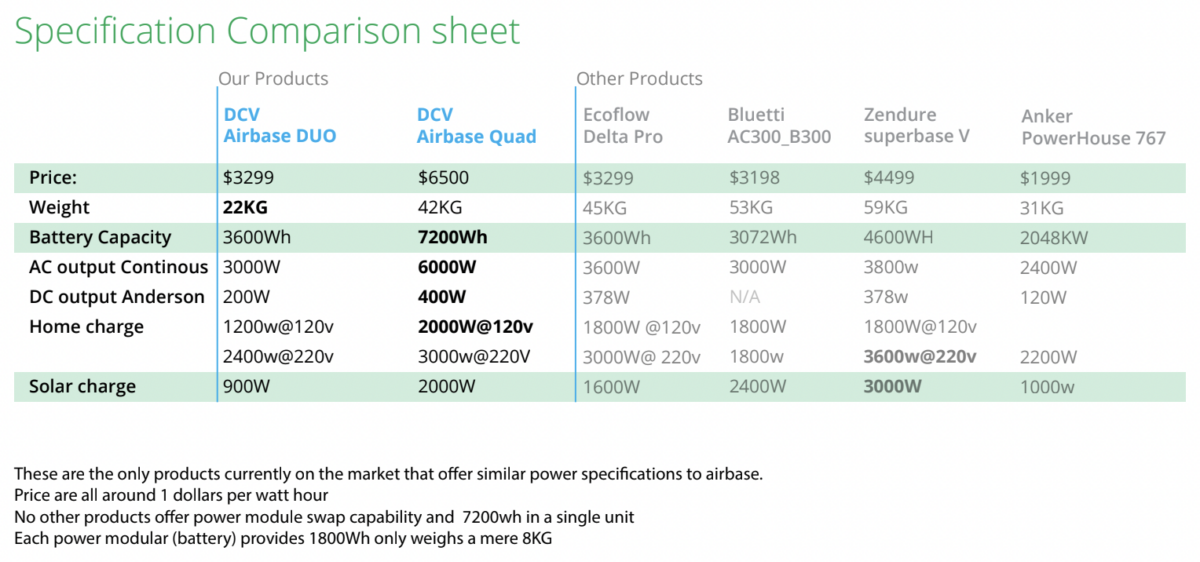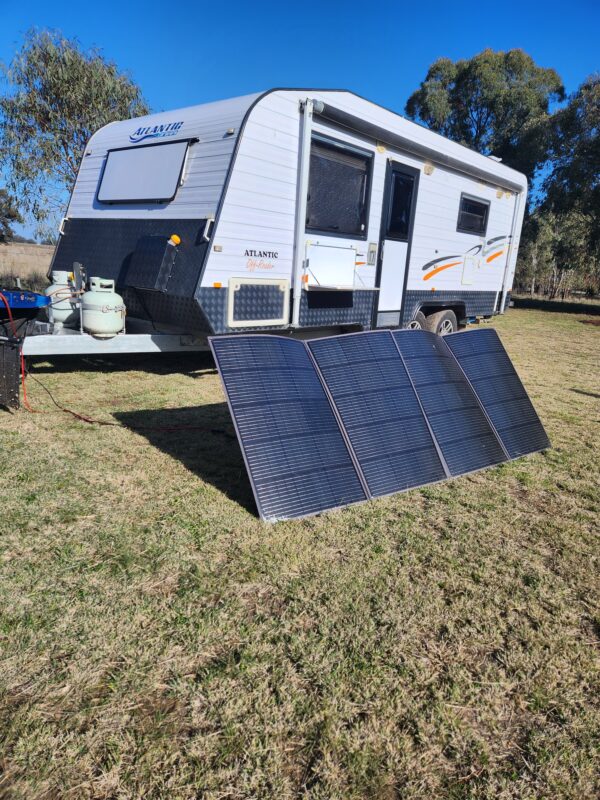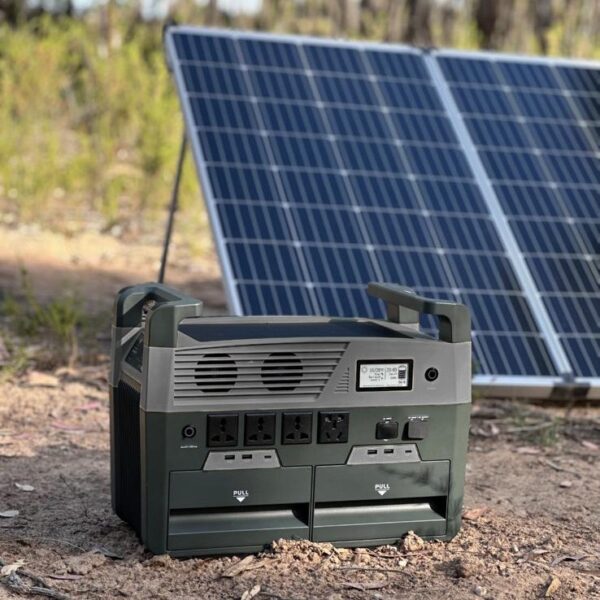Decarbon Venture, a startup cofounded by an outback-living Australian entrepreneur, has launched what it claims to be the world’s first “swappable” solar generator at half the weight and double the power rating of other products on the market.
Image: Decarbon Venture
It was engineer Geoff Elwood’s experience of lockdown in the Australian outback which inspired him to develop a new range of mobile solar generators, he says. With 7.2 kWh of storage and 6 kW of power, Decarbon Venture says its products are the most powerful mobile generators on the market today and outdo gas rivals.
“They are also much lighter and less expensive to operate than equivalent gas-powered generators,” Decarbon Venture cofounder Geoff Eldwood said.
The DCV AirBase ecosystem, as it is dubbed, includes foldable 400W solar panels which connect to a semi-solid state battery. The storage component is modular and comes in three variations:
In terms of pricing, the Airbase Quad comes it at USD 6500 ($9,670), and the Duo product at USD 3299 ($4,900).
The system is designed for car camping, boating, off-grid living, and potentially home backups. This is a highly popular market segment among Chinese manufacturers, with a multitude of such products on display at the Smart Energy Conference in May.
Decarbon Venture’s, however, emphasises its Australian-outback readiness – which is a decidedly tough natural environmental.
The company also says it is the first such product to allow batteries to be removed and replaced with fresh batteries without powering down. “I wanted to build an evergreen solution that uses modular power cells that can be swapped when needed, and can be scaled up or down,” Elwood said.
Decarbon Venture’s family of AirBase generators will be sold first as a Kickstarter campaign in late August 2023, and can be distributed globally.

This content is protected by copyright and may not be reused. If you want to cooperate with us and would like to reuse some of our content, please contact: editors@pv-magazine.com.
More articles from Bella Peacock
Please be mindful of our community standards.
Your email address will not be published.
By submitting this form you agree to pv magazine using your data for the purposes of publishing your comment.
Your personal data will only be disclosed or otherwise transmitted to third parties for the purposes of spam filtering or if this is necessary for technical maintenance of the website. Any other transfer to third parties will not take place unless this is justified on the basis of applicable data protection regulations or if pv magazine is legally obliged to do so.
You may revoke this consent at any time with effect for the future, in which case your personal data will be deleted immediately. Otherwise, your data will be deleted if pv magazine has processed your request or the purpose of data storage is fulfilled.
Further information on data privacy can be found in our Data Protection Policy.
Legal Notice Terms and Conditions Privacy Policy © pv magazine 2023
pv magazine Australia offers bi-weekly updates of the latest photovoltaics news.
We also offer comprehensive global coverage of the most important solar markets worldwide. Select one or more editions for targeted, up to date information delivered straight to your inbox.
This website uses cookies to anonymously count visitor numbers. To find out more, please see our Data Protection Policy.
The cookie settings on this website are set to “allow cookies” to give you the best browsing experience possible. If you continue to use this website without changing your cookie settings or you click “Accept” below then you are consenting to this.
Close
02 8005 6525
info@aktengineering.com.au

Recent Comments